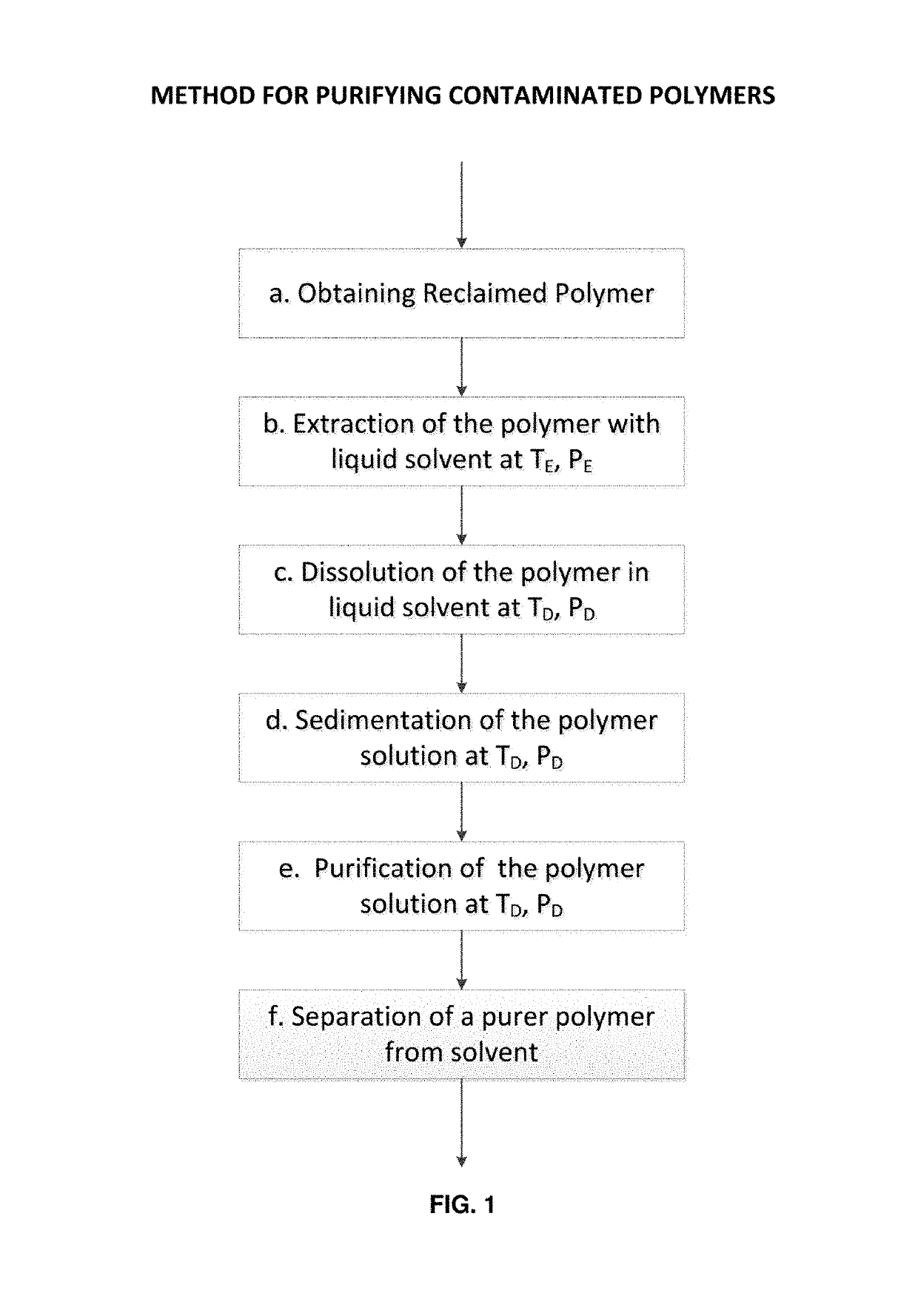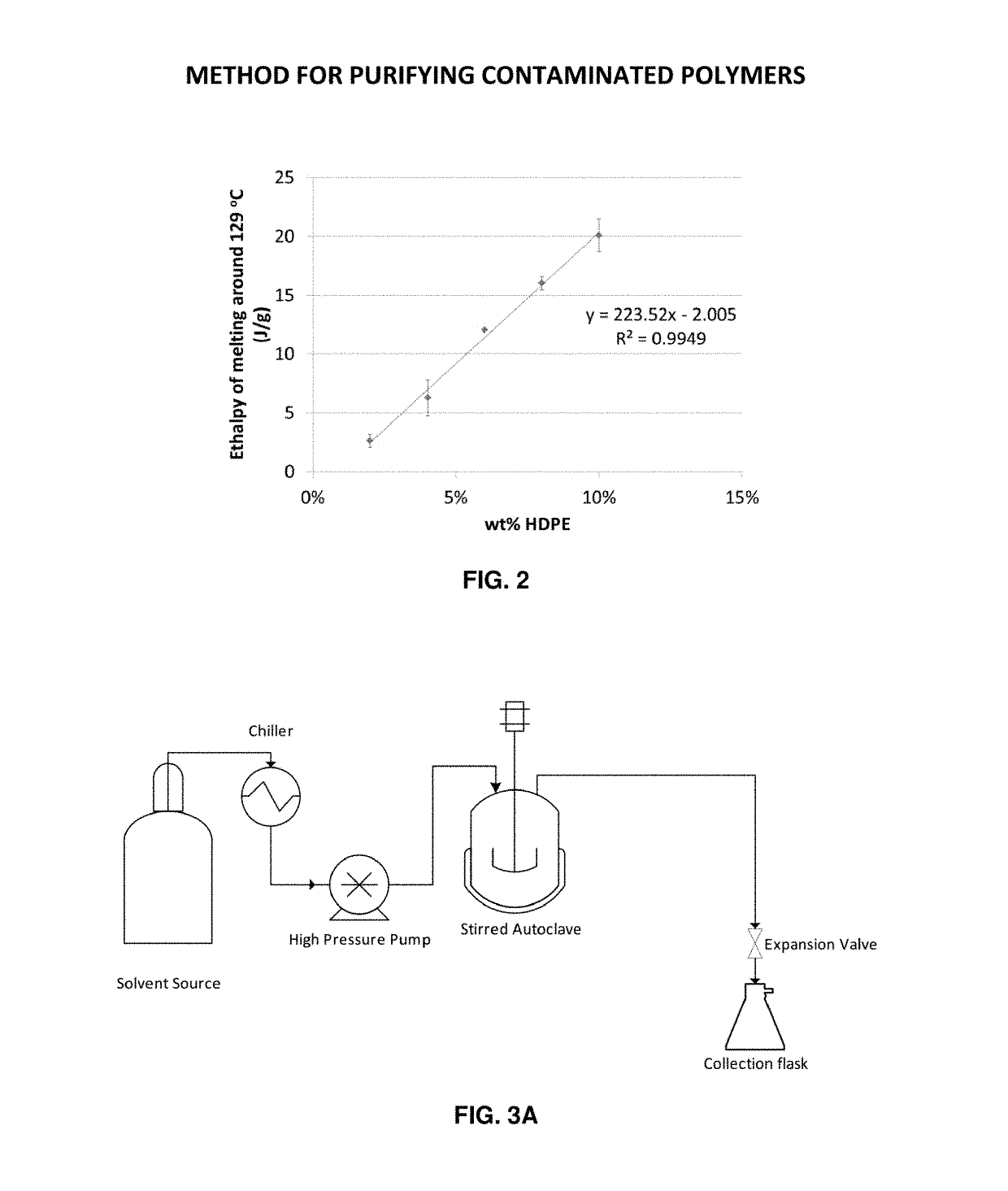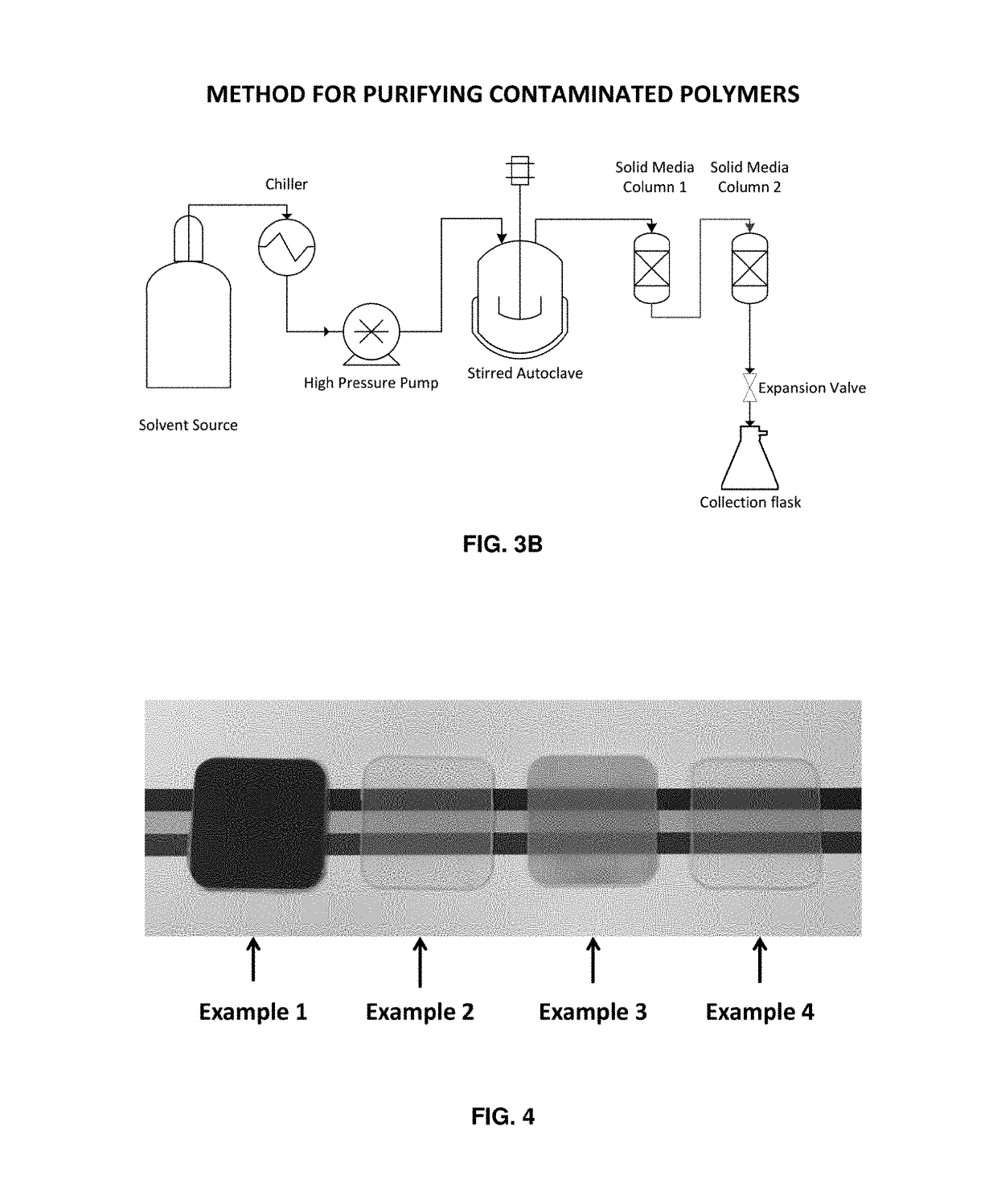Method for purifying reclaimed polymers
a polymer and purification technology, applied in the field of purification of contaminated polymers, can solve the problems of unsightly and potentially harmful to the environment, millions of tons of plastic waste generated every year, and the final reprocessed pellet remains highly contaminated with unwanted waste impurities, such as spoiled food residues and residual perfume components
- Summary
- Abstract
- Description
- Claims
- Application Information
AI Technical Summary
Benefits of technology
Problems solved by technology
Method used
Image
Examples
example 1
[0139]A sample of post-consumer derived recycled polypropylene mixed color flake was sourced from a supplier of recycled resins. The post-consumer recycled polypropylene originated from the United States and Canada. The as-received, mixed-color flake was homogenized via compounding on a Century / W&P ZSK30 twin screw extruder equipped with two 30 mm general purpose screws each with standard mixing and conveying elements. The screw rotation speed was about 50 rpm, the feeder throughput was about 20 lbs / hour (9.07 kg / hour) and the temperature of the barrel ranged from about 210° C. at the die to about 150° C. at the feed throat. The gray strand exiting the extruder was cooled in a room-temperature water bath, dried with air, and chopped into pellets.
[0140]The sample was characterized using the test methods disclosed herein and the resulting data are summarized in Table 1. The purpose of this example is to show the properties of a representative post-consumer derived recycled resin befor...
example 2
[0146]The sample of post-consumer derived recycled polypropylene mixed-color flake described in Example 1 was processed using the experimental apparatus shown in FIG. 3A and FIG. 3B and the following procedure:[0147]1. 286 g of mixed color flake was loaded into a Parr Instrument Company Model 4552M 7.57 liter autoclave equipped with an overhead mechanical stirrer.[0148]2. The autoclave was then completely filled with n-butane and equilibrated to an internal fluid temperature of 140° C. and a fluid pressure of 900 psig (6.21 MPa).[0149]3. The material in the autoclave was then extracted using the experimental configuration shown in FIG. 3A and the following procedure:[0150]a. The system was stirred for 10 min at 140° C. and 900 psig (6.21 MPa).[0151]b. After stirring, the system was settled for 10 min at 140° C. and 900 psig (6.21 MPa).[0152]c. One vessel volume of n-butane was flushed through the autoclave into a sample collection flask at 140° C. and 900 psig (6.21 MPa).[0153]d. Th...
example 3
[0167]The sample of post-consumer derived recycled polypropylene mixed-color flake described in Example 1 was processed using the experimental apparatus shown in FIG. 3A and FIG. 3B and the following procedure:[0168]6. 173 g of mixed color flake was loaded into a Parr Instrument Company Model 4552M 7.57 liter autoclave equipped with an overhead mechanical stirrer.[0169]7. The autoclave was then completely filled with n-butane and equilibrated to an internal fluid temperature of 140° C. and a fluid pressure of 900 psig (6.21 MPa).[0170]8. The material in the autoclave was then extracted using the experimental configuration shown in FIG. 3A and the following procedure:[0171]f. The system was stirred for 10 min at 140° C. and 900 psig (6.21 MPa).[0172]g. After stirring, the system was settled for 10 min at 140° C. and 900 psig (6.21 MPa).[0173]h. One vessel volume of n-butane was flushed through the autoclave into a sample collection flask at 140° C. and 900 psig (6.21 MPa).[0174]i. Th...
PUM
| Property | Measurement | Unit |
|---|---|---|
| boiling point | aaaaa | aaaaa |
| pressure | aaaaa | aaaaa |
| temperature | aaaaa | aaaaa |
Abstract
Description
Claims
Application Information
 Login to View More
Login to View More - R&D
- Intellectual Property
- Life Sciences
- Materials
- Tech Scout
- Unparalleled Data Quality
- Higher Quality Content
- 60% Fewer Hallucinations
Browse by: Latest US Patents, China's latest patents, Technical Efficacy Thesaurus, Application Domain, Technology Topic, Popular Technical Reports.
© 2025 PatSnap. All rights reserved.Legal|Privacy policy|Modern Slavery Act Transparency Statement|Sitemap|About US| Contact US: help@patsnap.com



